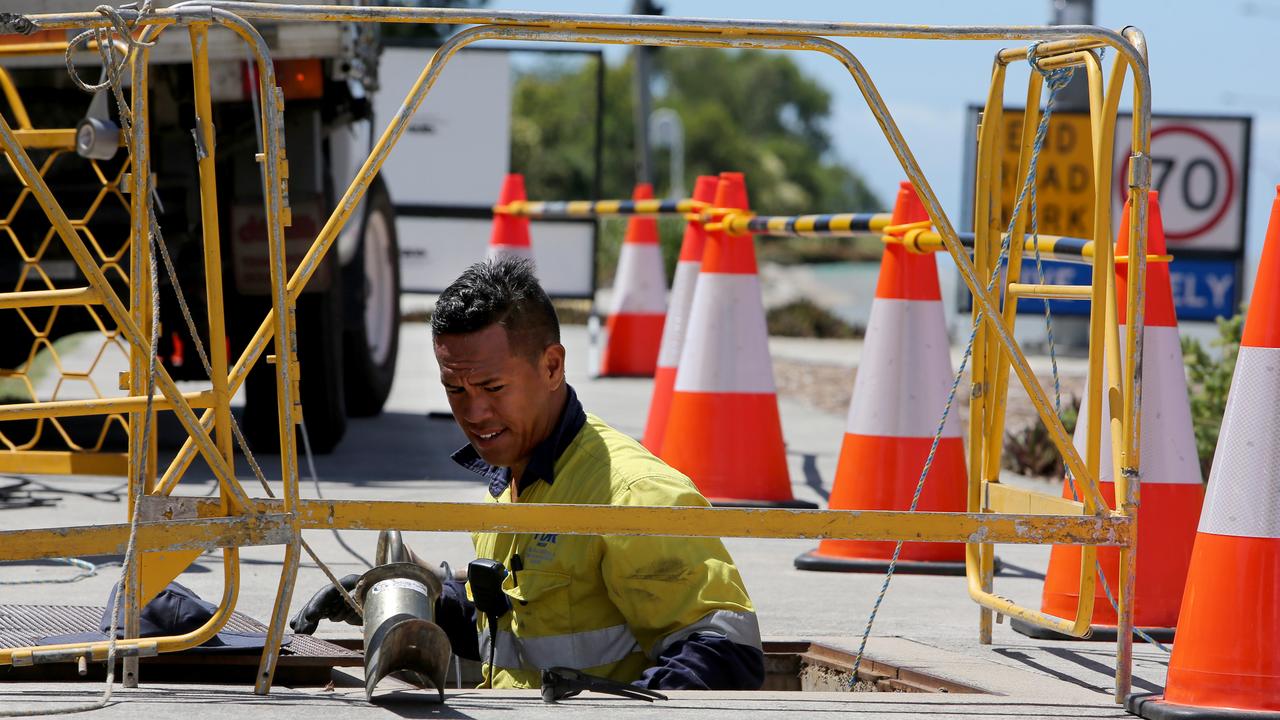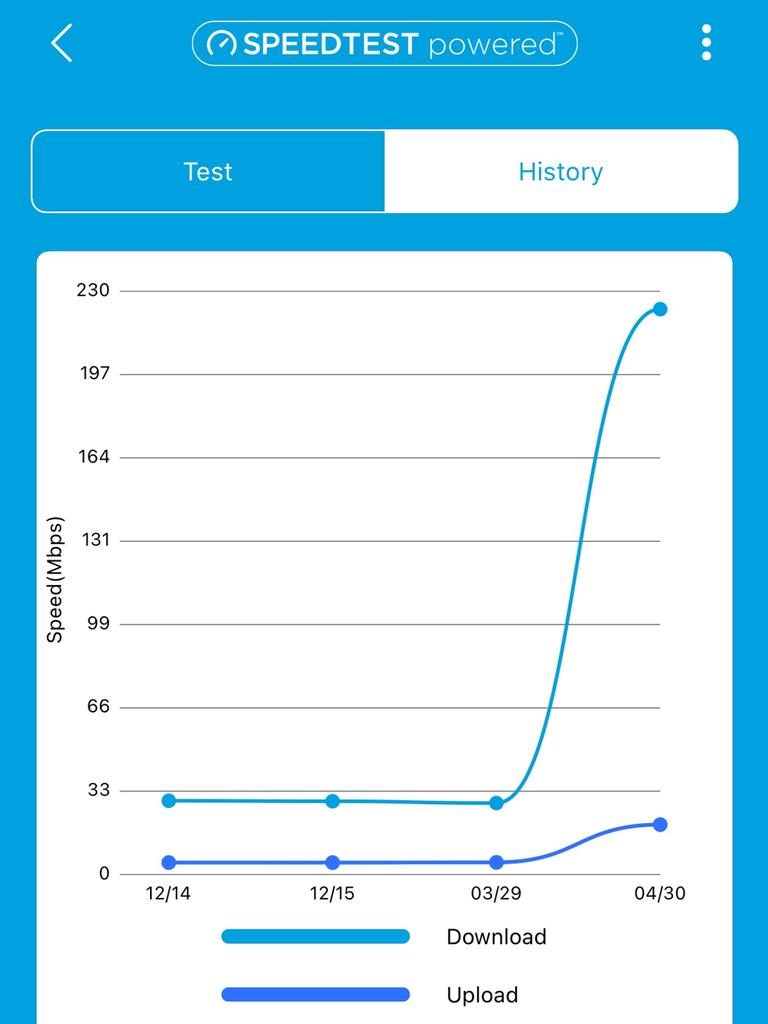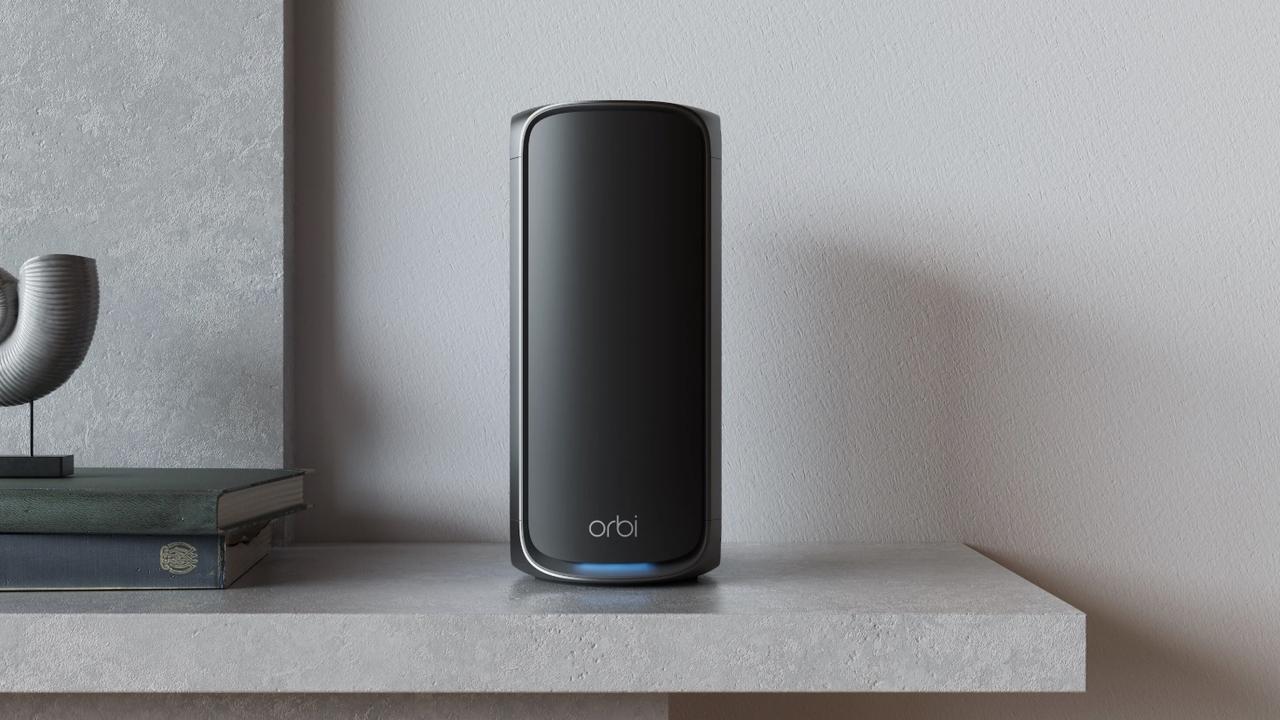I ditched the NBN and found a faster and cheaper alternative
If you’re not happy the NBN has again hiked prices, the government-owned telco encourages you to shop around. So that’s what I did, finding a much cheaper and faster plan.

NBN Co is hiking prices again, up to 3 per cent, from July 1, with the government-owned telco urging those who are unhappy with their plans to shop around.
“There are over 150 phone and internet providers Australia-wide that offer a variety of NBN plans with different inclusions and prices,” chief customer officer Anna Perrin said. “We encourage people to regularly check with their NBN provider for specific details about any changes to their bill and ensure they are on the right plan for their needs and budget.”
Makes sense to me, so I followed Ms Perrin’s advice – only I didn’t sign-up to another NBN provider. In fact, I cut ties with the telco altogether and experienced a 10-fold increase in my internet speeds.
Crucially, I slashed my internet bill more than 38 per cent, saving $34 a month.
How? I signed up for a 5G wireless plan. Now, advocates of the heavily indebted NBN may highlight that 5G is not as reliable as their fibre to their node – the telco’s most common type of connection.

But this is scaremongering. Actually, 5G wireless is exactly the same technology that connects your smartphone to the internet, and while 3G and 4G used to struggle if you were at the AFL grand final, sitting with more than 100,000 other people, telcos have made investments – including building more towers – to ensure it runs more smoothly.
What gave me the final push was my dodgy Telstra modem. Despite being the latest Smart 3 Modem, on Sunday morning when I asked my smart home speakers to play the radio, nothing happened. I opened the cupboard where my modem was and was faced with the white light of death.
This normally means the firmware needs updating. I did all the usual things – rebooting, resetting – but nothing. It had turned to a brick. I contacted Telstra, and was told to turn it on and off again soon – many times over a two-hour period — before I explained there were better things I needed to do and to send me another modem.
But this created another problem, Australia Post. I asked if I could exchange the modem at a Telstra store but was told that was not possible and I needed to go through the app and somebody would mail me a new one. Great.
During my four days – the time it took StarTrack to deliver said modem – I started looking at alternatives. I found TPG was offering a deal on 5G wireless. It has long offered services to rival the NBN. After keying in my address on its website, it said the service was available in my area. I was sold and signed up.
TPG’s modem arrived the same day as Telstra’s – it was the same StarTrack driver. Except with TPG I was paying $54.99 a month (for the first six months, then $64.99) versus $89 a month for my “basic NBN plan” with Telstra.

The 25Mbps download Telstra offered largely suited my needs, but when I looked at the NBN wholesale pricing, I baulked at the mark-up it was charging.
NBN Co charged Telstra and other telcos $33.96 a month for 25Mbps plans. This will be $34.64 a month from July 1. That’s a mark-up of more than 160 per cent.
And what do you get when things go wrong? A call centre operator who tells you to turn a modem on and off again for two hours.
Telstra’s mark-up is staggering. NBN Co pays Telstra about $1bn a year as part of an agreement to migrate customers from its old copper network to the NBN. It’s pure cream.
Then it gets an extra dollop by charging customers ridiculous prices to access NBN plans. Unlike power retailers – who assume the risk of volatile energy wholesale prices – NBN rates are steady. You know exactly what you’re getting.
To put this in perspective, TPG charges $56.99 a month for its 25Mbps NBN plan. Optus charges the same price as Telstra but offers a 100Mbps download speed – a 55 per cent mark-up on the NBN wholesale price – more than enough to cover its marketing costs, while providing a profit.
I haven’t used a landline in years, including with the Telstra plan, so I plugged in and was ready to go.
On my new 5G wireless modem, my signal displayed only two out of the three bars. But I have run numerous speed tests – during peak evening periods – which have all exceeded 200Mbps. This is almost 10 times what I was getting with Telstra.
What’s more, Opensignal, which analyses consumers’ connectivity, gave TPG’s 5G network an availability score of 57.9 per cent, versus 29.4 per cent for Telstra.
TPG has also virtually rebuilt its 5G network, removing the last vestiges of hardware from China’s Huawei and replacing with new equipment from Nokia.

To maximise my new-found speed, I have connected an Orbi 970 Series Quad-band Wi-Fi 7 Mesh router with two satellites. This is not cheap, costing $3,699, but it provides up to 660sq m of coverage throughout my home. It’s a beast, and like Telstra’s NBN plans, there are more affordable options out there.
TPG provides a refurbished Nokia modem that the Orbi router connects with to extend coverage. I can use the Orbi network to ensure I have consistent high coverage for my Ring doorbell and security cameras around the outside of my home, and all my other connected devices. If you don’t need internet connectivity outside or on different storeys or running on multiple devices at once, this router network is not for you.
The need for reliable broadband services is crucial. According to Telsyte, Australians have 24 connected devices per home – from smart speakers and televisions to fridges, washing machines and lightbulbs.
The Australian smart-home market is set to crack $2.5bn in revenue, largely driven by demand for energy efficiency and security as well as the technological advancements in generative artificial intelligence.
This all makes the need to access reliable internet as essential as electricity. Telstra knows that, which is why it charges the prices it does. The good news is you can take the NBN’s advice and shop around for a better deal. There are plenty of options out there.
Originally published as I ditched the NBN and found a faster and cheaper alternative



